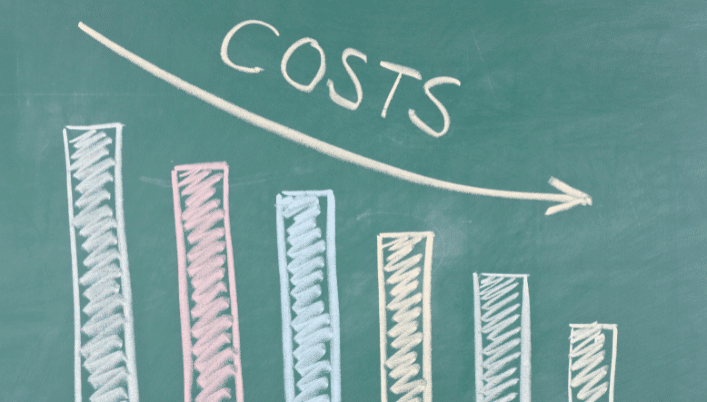
Gross Floor Area (GFA)
What is Gross Floor Area (GFA)?
Gross Floor Area (GFA) refers to the total floor space of a building, including all floors and areas within the building.
It encompasses enclosed spaces such as offices, rooms, and corridors, as well as unenclosed areas like balconies, terraces, and courtyards.
GFA is an important metric used in the construction and real estate industry to determine the size and scale of a building.
Different types of GFA
There are several definitions and measures associated with GFA, and it is essential to understand these terms to accurately calculate and assess the GFA of a building.
Some key considerations include the exclusion of certain spaces from the GFA calculation.
These exclusions may include external walls, shafts, columns, and land.
Moreover, the calculation of GFA can have implications on development charges and covered floor spaces, especially in the case of strata units and facilities.
How to calculate GFA
Calculating GFA involves adding up the total floor area of a building, which can be measured in square feet or other relevant units.
The calculation typically includes all enclosed spaces, such as offices, rooms, and mechanical and electrical ducts, along with projections like balconies and terraces.
It is important to note that unenclosed areas, such as open-air courtyards or parking lots, are generally excluded from the GFA calculation.
https://www.youtube.com/watch?v=55lRzwPx3yc
By accurately calculating the GFA, developers, architects, and urban planners can ensure compliance with regulations and make informed decisions regarding the size, layout, and functionality of a building.
It also plays a crucial role in determining permissible land use and density limits in urban planning and zoning.
Key Takeaways
- GFA Definition: Gross Floor Area (GFA) refers to the total floor space of a building, including all enclosed and unenclosed areas.
- Importance of GFA: GFA is crucial in the construction and real estate industry for determining a building’s size and scale.
- Different Types of GFA: There are various definitions and measures of GFA, and it’s essential to understand them for accurate calculations.
- GFA Calculation: Calculating GFA involves measuring the total floor area of a building, including enclosed spaces but excluding unenclosed areas.
- GLA Definition: Gross Leasable Area (GLA) is the total floor area available for lease in commercial or non-landed residential developments.
- How GLA is Calculated: GLA is calculated by measuring the gross internal area of a building, excluding common areas and non-rentable spaces.
- Distinction Between GLA and GFA: GLA should not be confused with GFA; GFA includes the total floor area, while GLA focuses on rentable space.
- Plot Ratio: The plot ratio is the ratio between the GFA of a development and the total land area, used to control development intensity.
- Plot Ratio Calculation: Calculate the plot ratio by dividing the total GFA by the land area; it helps ensure urban planning goals are met.
- Cost Planning: Estimating construction costs based on GFA is essential; factors like measurement methods and local regulations can affect costs.
Gross Leasable Area (GLA)

What is Gross Leasable Area (GLA)?
Gross Leasable Area (GLA) refers to the total floor area that is available for lease in a commercial or non-landed residential development.
It includes the interior space of the building, excluding any common areas or non-rentable spaces.
GLA is an important factor in development applications and commercial developments as it determines the amount of space that can be leased out for commercial purposes.
In Singapore, GLA is calculated by measuring the gross internal area of the building, which includes the floor area at each floor level.
The measurement is taken from the face of the external walls.
How is GLA calculated?
The calculation of GLA varies in different countries and regions.
In Singapore, GLA is determined based on the gross internal area of the building, while in Hong Kong, it is measured from the face of the external walls.
The GLA calculation in Singapore also takes into account any external areas that are enclosed, such as covered walkways or terraces.
GLA can also impact the development charge imposed by the government.
The larger the GLA, the higher the development charge, as it reflects the potential commercial value of the development.
GLA vs. GFA
GLA should not be confused with Gross Floor Area (GFA).
While GLA refers to the total floor area available for lease, GFA includes the total floor area inside the building envelope, including the external walls.
GFA is measured at each floor level of the building, while GLA focuses on the rentable space within the building.
https://www.youtube.com/watch?v=UJiTHLExoWQ
In summary, GLA plays a crucial role in determining the leasable space of a commercial or non-landed residential development.
Understanding the difference between GLA and GFA is important in accurately evaluating the floor area of a building and its commercial potential.
GFA Calculation

Step-by-step guide to calculating GFA
Calculating the Gross Floor Area (GFA) of a building in Singapore can be a complex process.
Here is a step-by-step guide to help you understand how it is done:
- Understand the covered floor areas: GFA includes the total area of the covered floors in a building, including basements, mezzanine levels, and roof terraces.
- Determine the area of the covered floor: This is the actual floor space measured from the internal face of the external walls.
- Consider the center line of party walls: The area occupied by the centre line of party walls is shared between different units and is not included in the GFA calculation.
- Take into account development charges: These are charges levied by the government based on the GFA of the proposed development.
- Consult the floor space handbook: The Urban Redevelopment Authority provides a handbook that offers guidelines and standards for measuring GFA.
GFA calculation formulas and examples
To calculate GFA, formulas, and examples are used to determine the specific GFA for different components of a building:
- Floor area within a development: This formula calculates the GFA for individual units within a building.
- GFA calculation for a developer: For developers, GFA includes not only the covered floor space but also additional floor space, such as voids and air-conditioner ledges.
- External walls of the building: The GFA includes the thickness of external walls.
Common mistakes to avoid when calculating GFA
When calculating GFA, it’s important to avoid common mistakes that could lead to inaccuracies or penalties:
- Misunderstanding plot ratio: The plot ratio is the maximum amount of floor space allowed on a piece of land. Exceeding this could result in penalties.
- Incorrectly calculating bonus GFA: Bonus GFA is the additional floor space allowed for amenities like balconies and sky gardens. Failing to account for this could result in understating the GFA.
- Ignoring surveyor guidance: It is crucial to consult a professional surveyor who can provide accurate measurements and ensure compliance with regulations.
By following these guidelines and avoiding common mistakes, you can accurately calculate the Gross Floor Area of your building in Singapore.
Plot Ratio

What is the plot ratio?
Gross Floor Area (GFA) is a commonly used term in the real estate industry, especially in Singapore.
It refers to the total floor area of a building, including both usable and non-usable spaces.
These spaces encompass the lobby, corridors, walls, and other areas within the building.
In Singapore, GFA is regulated by the Urban Redevelopment Authority (URA) through the concept of plot ratio.
Plot ratio is a planning control that determines the maximum allowable development intensity on a piece of land.
It is the ratio between the total GFA of development to the total land area. GLA usually excludes corridors walls of the building measured between the outside.
The plot ratio control ensures that future developments are in harmony with the surrounding environment and adhere to the city’s urban planning goals.
The purposes of plot ratio include managing population density, preserving open spaces, and maintaining the city’s aesthetics.
Developers may be subject to paying a development charge if they exceed the plot ratio limit set by the URA.
How to calculate the plot ratio
Calculating the plot ratio involves determining the total GFA and dividing it by the land area.
Development proposals, cost planning, and work-and-play concepts are taken into account.
To calculate the GFA, all floor areas are summed up, including mezzanine levels, basements, and any other areas that are part of the development.
The GFA can be measured in square footage or square meters, depending on the unit of measurement used in the country or region.
Plot ratio regulations in Singapore
In Singapore, the measurement of GFA follows specific regulations.
Walls are measured up to the internal face, and the GFA excludes corridors and other public areas.
The GFA includes public areas inside the development if they are enclosed within the development.
The URA’s development control guidelines dictate the measurement of GFA and the determination of plot ratio in development proposals.
These regulations ensure that developments in Singapore are harmonious, sustainable, and meet the city-state’s urban planning objectives.
Cost Planning

In Singapore, estimating construction costs based on Gross Floor Area (GFA) is an essential aspect of cost planning.
GFA refers to the total floor area within the external walls of a building, including all levels and spaces.
Here are some key points to consider when estimating construction costs based on GFA.
How to estimate construction costs based on GFA
- Measure GFA: Begin by accurately measuring the GFA, which includes the thickness of external walls and spaces between the center lines of the walls.
- Consider construction costs: Once you have the GFA, you can estimate construction costs based on the prevailing rates for building materials, labor, and other expenses.
- Development applications and control: Understanding the local development applications and controls will help you navigate any restrictions or requirements that may impact the construction costs.
- Intensity of development: The intensity of development, including the height, plot ratio, and land use, can influence the construction costs. Higher-density developments tend to have higher construction costs.
Factors that affect construction costs
Several factors can influence construction costs in Singapore, including:
- Measurement method: Whether the GFA is measured between the center lines of walls or outside faces can affect the cost estimation.
- Master plan and development control: The guidelines and regulations set by the government’s master plan and development control can impact construction costs.
- Mezzanine and restricted use areas: Spaces such as mezzanines or areas with restricted use may require additional investments, impacting the overall construction costs.
Tips for saving money on construction costs
To save money on construction costs in Singapore, consider the following:
- Minimize basement areas and unnecessary features.
- Optimize garage space and make efficient use of each floor level.
- Utilize the uncovered areas for cost-effective development.
- Align the development proposal with the guidelines of the development control authority.
- Explore innovative construction techniques and materials to reduce costs.
By carefully estimating construction costs based on GFA and implementing cost-saving strategies, you can effectively manage the budget of your construction project in Singapore.
Conclusion
Gross Floor Area Singapore Conclusion
In conclusion, understanding the concept of Gross Floor Area (GFA) is crucial when it comes to measuring and evaluating the size and usage of a building in Singapore.
The GFA is an important metric that helps in determining property values, rental prices, and compliance with regulations.
It includes the total floor area of a building, including the measured area between the outside walls, but usually excludes certain areas such as corridors, elevator shafts, stairwells, duct shafts, and pilasters, unless otherwise stated.
The GFA measurement is useful not only for property developers and investors but also for the government and urban planners.
It helps in assessing the density and efficiency of a building, as well as determining zoning and land use policies.
By considering the GFA, urban planners can ensure that buildings are designed to maximize space utilization and meet the needs of the community.
It is important to note that the GFA measurement can vary depending on the country or region.
In Singapore, the Urban Redevelopment Authority (URA) provides guidelines and regulations for measuring GFA, ensuring consistency and accuracy in the calculation across different properties.
Overall, having a clear understanding of GFA is essential for anyone involved in the construction, real estate, or urban planning industries in Singapore.
It provides a standardized approach to measuring the floor area of a building, allowing for fair valuation, efficient space utilization, and compliance with regulations.
By following the guidelines set by the URA, developers, and investors can make informed decisions about their projects, while the government can ensure sustainable urban development.
Frequently Asked Questions
What is the definition of gross floor area?
Gross floor area is the total area contained within the external walls of a building measured at each floor level.
It includes all covered floor space measured between the centre lines of enclosing walls, including the thickness of the external walls.
What does calculating gross floor area involve?
Calculating gross floor area involves measuring the total covered space of a building, including all upper floors, wall faces, and areas used for various purposes.
Does the gross floor area include the exterior walls?
Yes, gross floor area includes the area contained within the external walls of a building.
Is the gross floor area the same as GLA (Gross Leasable Area)?
No, the gross floor area usually excludes corridors, refuse storage, and other spaces that are otherwise exempted from the calculation.
How is the gross floor area calculated?
The gross floor area is calculated by measuring the total covered floor space between the centre lines of enclosing walls, including the thickness of the external walls, at each floor level of the building.
What is the significance of calculating gross floor area?
Calculating gross floor area is important for various purposes, such as determining the total size of a building, assessing its compliance with zoning regulations, and calculating its potential value for lease or sale.
Are residential projects included in the calculation of gross floor area?
Yes, the gross floor area includes all types of projects, including residential ones.
What is excluded from the calculation of gross floor area?
Corridors, refuse storage, and other spaces that are otherwise exempted are usually excluded from the calculation of gross floor area.
How is the gross floor area measured to the internal face of walls?
The gross floor area is measured between the inside faces of the walls, including the thickness of the walls.
What is the gross floor area measured between?
The gross floor area is measured between the centre lines of enclosing walls at each floor level.












